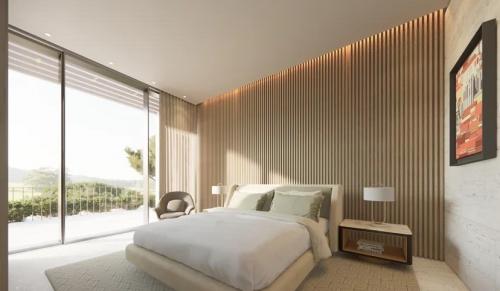Illusions of Space and Light Created by Mirrors in Interior Design

Mirrors are magical tools in the hands of interior designers, capable of transforming spaces by creating illusions of depth, space, and light. Whether your home is large or small, mirrors can be used strategically to enhance natural light, visually expand rooms, and add a sense of depth and dimension to interiors. In this blog, we'll explore the fascinating ways in which mirrors can be incorporated into interior design to create illusions of space and light, elevating your home's aesthetic and ambiance to new heights.
Maximizing Natural Light:
One of the most powerful ways mirrors can enhance interior spaces is by maximizing natural light. Placing mirrors strategically opposite windows or light sources reflects incoming light into the room, instantly brightening and illuminating dark corners and creating a sense of airiness and openness. This technique not only enhances the ambiance of the space but also reduces the need for artificial lighting during the day, promoting energy efficiency and sustainability.
Creating the Illusion of Depth:
Mirrors have the remarkable ability to create the illusion of depth in even the smallest of spaces. By strategically positioning mirrors on walls or ceilings, designers can visually extend the boundaries of rooms, making them appear larger and more spacious than they actually are. Mirrors can also be used to create a sense of continuity and flow between adjoining spaces, blurring the boundaries and enhancing the overall sense of openness and expansiveness.
Adding Architectural Interest:
Mirrors can serve as dynamic architectural elements that add interest and drama to interior spaces. From floor-to-ceiling mirrors that create dramatic focal points to mirrored accent walls that add texture and dimension, mirrors can be used to enhance the architectural features of a room and draw the eye towards key design elements. Additionally, mirrors can be framed or shaped in creative ways to complement the overall aesthetic of the space, adding a touch of elegance and sophistication to your interior design.
Enhancing Visual Balance:
In rooms with asymmetrical layouts or awkward proportions, mirrors can be used to create visual balance and harmony. Placing mirrors on one side of the room can visually counterbalance heavy or dominant elements on the opposite side, creating a sense of equilibrium and proportion. Mirrors can also be used to reflect and amplify existing focal points or design features, drawing attention to areas of interest and enhancing the overall visual appeal of the space.
Infusing Style and Elegance:
Beyond their practical benefits, mirrors also serve as stylish and elegant decor elements that add personality and charm to interior spaces. Choose mirrors with unique frames, interesting shapes, or decorative details to complement your home's aesthetic and reflect your personal style. Whether you prefer sleek and modern designs or vintage-inspired pieces, mirrors can be used to add a touch of glamour and sophistication to any room in your home.
Ready to harness the transformative power of mirrors in your interior design projects? Explore the Interior Design courses at one of the best Interior Designing Colleges in India like IIFD - Indian Institute of Fashion & Design and gain the knowledge and skills to incorporate mirrors into your design repertoire. Join us in unlocking the secrets of space and light with mirrors in interior design.
Conclusion:
Mirrors are indispensable tools in the arsenal of interior designers, offering endless possibilities for creating illusions of space, light, and dimension in interior spaces. Whether used to maximize natural light, create the illusion of depth, add architectural interest, enhance visual balance, or infuse style and elegance, mirrors have the power to transform rooms and elevate the overall aesthetic and ambiance of your home. So, embrace the magic of mirrors and unlock the potential of your interior spaces with the transformative power of light and space.
Comments